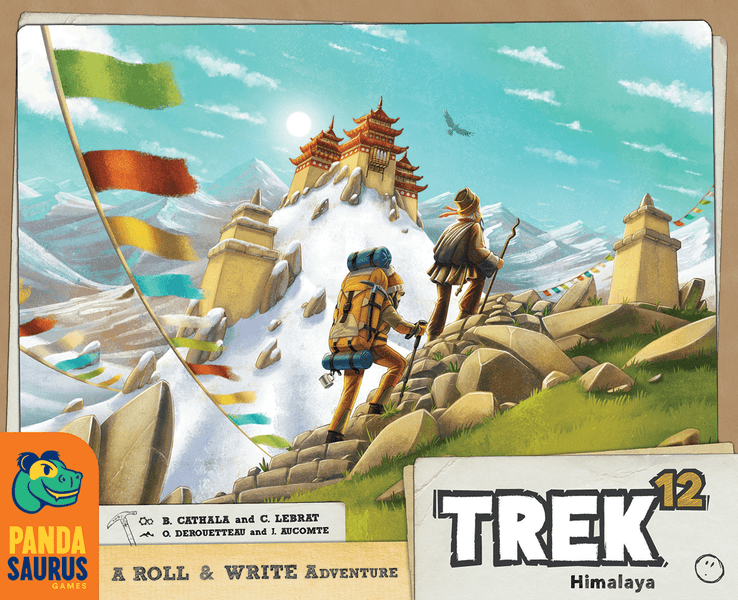Trek 12: Himalaya (2020) Board Game
Trek 12: Himalaya is a board game released in 2020 by Lumberjacks Studio. Designed by Bruno Cathala and Corentin Lebrat, this game takes players on an adventure through the Himalayan mountains. With a focus on dice rolling and strategic decision-making, Trek 12 offers a unique and immersive gameplay experience for 1 to 50 players.
Game Components of Trek 12: Himalaya
How To Setup Trek 12: Himalaya
To set up the game, each player receives a blank mountain sheet, and the two dice are placed within reach. In the Trek Mode, all players use the same ascent sheet, with Dunai recommended for the first game. For the Expedition Mode, each player gets one sheet for each of the three different climbs (Dunai, Kagkot, and Dhaulagiri). The Assist cards are shuffled, and a set number are placed face up on the table.
Gameplay Mechanics and Game Objective
Key Mechanics
Game Objective
Player Experience
**Trek 12: Himalaya** offers a challenging and math-heavy experience, requiring strategic thinking and careful planning. The game scales well for any number of players, and the Expedition Mode adds a thrilling legacy-like element with unlockable content. Players must balance creating valuable Mapped Areas and Fixed Lines while managing their limited number placement options. The Assist cards provide valuable flexibility and strategy, especially in the Expedition Mode.
Pros
Cons
Personal Thoughts on Trek 12: Himalaya
**Trek 12: Himalaya** is ideal for fans of roll-and-write games and those who enjoy strategic number placement challenges. It is particularly suited for players who appreciate a game with depth and replayability. While the Solo Mode is available, the game shines in its multiplayer and Expedition modes, making it a great addition to any board game collection for groups looking for a engaging and math-heavy experience. However, it may not be the best fit for casual or younger players due to its complexity and the need for careful planning.
We are supported by our audience. When you purchase through links on our site, we may earn an affiliate commission, at no extra cost for you. Learn more.

